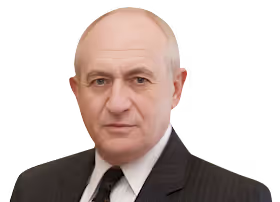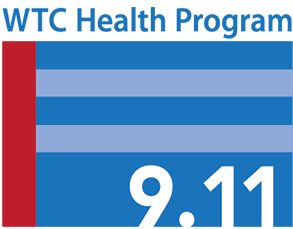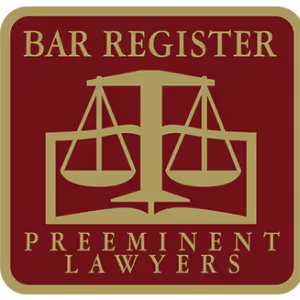
GET ZADROGA ACT COMPENSATION WITH HELP FROM SKILLED 9/11 FUND ATTORNEYS
Sept. 11, 2001, was one of the gravest days in United States history. Terrorists connected with the militant group al-Qaida, hijacked four airliners that day, slamming two of them into the towers of the World Trade Center in New York City. The towers crumbled, and first responders rushed to the scene, digging through the rubble amid a cloud of toxic debris. But in the months and years to come, these people began to experience a range of negative health effects.
The 9/11 victims’ compensation fund lawyers at Parker Waichman LLP understand the pain and loss of the 9/11 attacks. We are from New York, and our friends, family, and neighbors worked at the World Trade Center. The sense of devastation with which we were left continues to resonate nearly 20 years later. At our VCF law firm, we proudly fight for the heroes who rushed into the chaos to help and, in the years to follow, have paid the price for that heroism. Our Zadroga Act lawyers have the experience and resources to pursue justice for people who suffered health complications after the 9/11 response.
WHAT IS THE ZADROGA ACT AND THE VICTIM COMPENSATION FUND (VCF)?
The Zadroga Act is a compensation fund that was set up through statute. Congress established the original VCF to bring financial relief to those most affected by the events on September 11, 2001. VCF1 closed in 2004. The Zadroga Act reopened the VCF in 2011. The Zadroga Act has a compensation fund that people can file claims in if they had exposure to toxins during 9/11 known as the September 11thVictims Compensation Fund.
There are specific 9/11 victims’ compensation fund eligibility criteria and certain conditions that can qualify, but overall, it is a way to actually take care of these people who sacrificed so much on 9/11 and during the aftermath and the cleanup, when they were exposed to carcinogens. No one could have predicted the types of problems and conditions first responders and others around the towers would have after 9/11. The Zadroga Act is here to help those people, and our 9/11 attorneys are here to help victims understand how to claim the compensation they deserve.
UNDERSTANDING THE TRAGIC EVENTS OF 9/11

Understanding the history of the attacks and how they transpired helps our 9/11 lawyers deliver the highest degree of legal representation for the victims of the aftereffects of the 9/11 terror attacks. The scope of the attacks were massive, including a horrendous death toll. Nearly 3,000 people died, 2,606 of them at the World Trade Center alone. Among the dead were over 400 first responders from the New York City Fire Department (FDNY) and the New York City Police Department (NYPD) as well as the NY/NJ Port Authority Police Department (PAPD). In addition to the 3,000 who died, another 10,000 suffered a variety of injuries.
THE 9/11 TIMELINE OF EVENTS
Tower 1 Is Struck: The Nation Realizes We Are Under Attack
We watched in horror after learning that at around 8:45 a.m., a plane had struck the North Tower. The aircraft was loaded with 20,000 pounds of jet fuel when it struck the tower, which was also known as Tower 1. American Airlines Flight 11 struck the tower around the 80th floor and burst into a massive fireball. Many people died instantly, and others perished in the smoke and flames.
Tower 2 Is Struck: The Disaster Builds
Eighteen minutes later, another passenger jet, United Airlines Flight 175, demolished the South Tower after striking it at the 77th floor. The explosion blew steel, glass, airplane parts, and other debris onto the streets below. Hundreds were trapped above the impact zone. Those poor, unfortunate souls trapped by the smoke and flames reached out for rescue only to find that their fate was sealed.
Heroic Response
FDNY, NYPD, and PAPD officers raced to the Twin Towers. Surely, they must have wondered how they would extinguish an inferno that was burning at more than 1,000 degrees Fahrenheit.
The jet fuel burned off quickly, but the resulting fires burned so hot that the floors themselves began to pull away from the outer columns. Nonetheless, the firefighters, each laden with 90 pounds of gear, climbed the staircases of the towers directly into the blaze.
The Fall of the Twin Towers
At 9:59 a.m., the South Tower started to collapse. Within seconds, the 110-story structure would be reduced to a pile of rubble. Television cameras captured the scene as people on the ground and across the country watched the South Tower sink to the ground.
But firefighters, paramedics, and police still continued their efforts in the North Tower. Department heads gave the order to evacuate that building after the South Tower fell, but due to poor communication, not everyone heard the call. The NYPD had a helicopter in the air near the North Tower, and the officers on board noted that the tower was buckling on one side. A short time later, the officers told their dispatch center that the roof would collapse imminently.
At 10:28 a.m., the North Tower came down. The catastrophic failure of the structure occurred 102 minutes after the first plane hit the tower.
Who Attacked the United States on 9/11?
Terrorists with a group known as al-Qaida perpetrated the 9/11 attacks, backed by their Saudi leader, Osama bin Laden. These terrorists entered the United States from some of our ally nations in the Middle East, such as Saudi Arabia and the United Arab Emirates, as well as Egypt and Lebanon. Reportedly, the attacks were retribution for American activities in the Middle East.
Catastrophic Loss of Life
Approximately 3,000 people were killed in the attacks, easily surpassing the number killed at Pearl Harbor. In New York, 343 firefighters were killed while trying to save workers trapped inside the Twin Towers. Another 23 police officers died, as did 37 Port Authority officers. Only 14 people who were trapped above the impact zone in the South Tower survived. They all made it out of the building via Stairwell A, the only staircase that was not destroyed when the plane collided with the building. No one who was trapped above the impact zone of the North Tower lived that day: All exit routes were destroyed because of the crash, explosion, and subsequent fires.
The Aftermath
The collapse of the World Trade Center towers coated lower Manhattan in a cloud of dust and debris. No one was immune from the pulverized steel, concrete, and glass invading their lungs, eyes, and noses. It was estimated that half a million people were blanketed by the dust cloud in lower Manhattan and neighboring Brooklyn. Late in the afternoon of Sept. 11, 2001, World Trade Center building number 7, which was situated immediately adjacent to the Twin Towers, also collapsed. Rescuers now dubbed the entire site “the Pile,” a place containing 1.8 million tons of debris. However, the World Trade Center area, which was essentially a massive crime scene, became universally known as “Ground Zero.”
9/11 Health Problems
The explosions from the plane crashes and the subsequent collapse of the towers and resulting dust cloud scattered carcinogenic materials all over New York. As a result, the asbestos, fiberglass, glass, concrete, and other debris that filled the air and blanketed the earth near Ground Zero created a massive and growing health crisis.
The deaths caused by the 9/11 attacks didn’t end that day or even that week. Medical experts have determined that around 60 varieties of cancer and 30 other chronic or debilitating diseases can be linked to exposure to the fallout from the collapsing towers and recovery work at Ground Zero. The death toll continues to grow today. Thousands of people have died from illnesses related to the aftermath of the 9/11 attacks.
If you or a loved one suffered injury or illness as a result of 9/11, you are likely entitled to compensation. Our 9/11 victims’ compensation fund lawyers are here to help.
What Is Zadroga Act?
The Zadroga Act is officially named the James Zadroga 9/11 Health and Compensation Act of 2010, commonly referred to as the Zadroga Act. The law directs financial compensation and health monitoring to people who developed cancer and other chronic diseases due to the carcinogens that were blown throughout New York.
The compensation distributed by the Zadroga Act is separated into two categories: the World Trade Center Health Program, created to provide health monitoring and care to those suffering from 9/11-related health problems, and the September 11th Victim Compensation Fund, formed to compensate victims and their families for their losses. The Zadroga Act re-opened the Victim Compensation Fund (VCF), which had been closed in 2004.
The Zadroga Act is named after James Zadroga, who was a victim of the 9/11 attacks but did not die that day. Zadroga was a New York City Police Department detective who helped search for victims in the rubble. He subsequently contracted a respiratory disease, which doctors linked to exposure to chemicals from Ground Zero. He died in 2006 from related illnesses stemming from his heroic efforts to save people or bring them home after the towers fell.
In December 2015, the Zadroga Act was reauthorized, increasing funding for the Victims Compensation Fund. In July 2019, the President signed the Never Forget the Heroes, James Zadroga, Ray Pfeifer, and Luis Alvarez Permanent Authorization of the September 11thVictims Compensation Fund (VCF Permanent Authorization Act”), extending the deadline for filing a claim until October 1, 2090.
Who Qualifies for Zadroga Act Coverage?
Applicants who believe that they are suffering from a 9/11-related illness must be evaluated and approved before they receive coverage under the Zadroga Act. A 9/11 fund lawyer can guide you through the process: There are strict guidelines for qualifying for each component, and 9/11 VCF attorneys can help the process of getting assistance go more smoothly.
Applicants who pursue Zadroga claims under the VCF must meet certain qualifications. You must:
- Have never been involved in or have previously dismissed a 9/11 class-action lawsuit or individual legal action
- Have a 9/11 certified condition
- Prove that you were at Ground Zero or within the New York City exposure area from Sept. 11, 2001, through May 31, 2002.
The fund will ask you to waive certain rights to a traditional 9/11 lawsuit settlement to qualify for benefits. That is one of the many reasons to seek out World Trade Center law firms that can help you to secure 9/11 victims’ fund payouts. An experienced 9/11 victims law firm can also assist you in navigating the claims process: The law allows you to have counsel of your choosing to guide you through your claim. If you are denied a claim and you believe the decision was wrong, your 9/11 victims ‘compensation fund lawyers can assist you in appealing the denial of benefits.
What Are the 9/11-Related Illnesses Covered Under the Zadroga Act?
The Zadroga Act covers illnesses included under the World Trade Center Health Program. Illnesses and injuries that may form the basis for 9/11 claims include:
Cancers:
- Blood and lymphoid tissue (including lymphoma, myeloma, and leukemia)
- Breast
- Childhood cancers
- Digestive system (including colon and rectum)
- Eye and orbit
- Ovary
- Head and neck (oropharynx and tonsil)
- Prostate
- Mesothelioma
- Rare cancers (read a statement from the Administrator about Rare Cancers for more information)
- Respiratory system (including lung and bronchus)
- Skin (melanoma, non-melanoma and carcinoma in situ)
- Soft and connective tissue
- Thyroid
- Urinary system (including kidney and bladder)
Airway and Digestive Disorders:
- Asthma
- Chronic cough syndrome
- Chronic laryngitis
- Chronic nasopharyngitis
- Chronic respiratory disorder- fumes and vapors
- Chronic rhinosinusitis
- Gastroesophageal reflux disorder (GERD)
- Interstitial lung disease
- New-onset, and WTC-exacerbated chronic obstructive pulmonary disease (COPD)
- Reactive airway dysfunction syndrome (RADS)
- Sleep apnea (medically associated to another airway or digestive disorder)
- Upper airways hyperactivity
Acute Traumatic Injuries:
- Burn
- Complex sprain
- Eye injury
- Fracture
- Head trauma
- Tendon tear
Musculoskeletal Disorders (applies to WTC Responders only):
- Carpal tunnel syndrome (CTS)
- Low back pain
- Other musculoskeletal disorders
Mental Health Conditions (World Trade Center Health Program only, not compensable by the Victims Compensation Fund):
- Acute stress disorder
- Adjustment disorder
- Anxiety disorders
- Depression
- Dysthymic disorder
- Generalized anxiety disorder
- Major depressive disorder
- Panic disorder
- Post-traumatic stress disorder (PTSD)
- Substance use disorder
What Benefits Can I Receive Under the Zadroga Act?
Your 9/11 payout may include compensation for non-economic losses, like pain and suffering and decreased quality of life due to your disability. You might also be able to claim compensation for things such as medical expenses, lost salary, and the costs of hiring help to do tasks you used to be able to perform yourself.
Can I File a Claim if I Lost a Loved One?
Yes, you can. Deceased loved ones may be eligible for full 9/11 victims’ fund payouts no matter what pre-existing conditions they had. If they passed away due to traumas sustained on 9/11 or being near Ground Zero caused them to pass away at a later date, they may still be eligible for benefits, which in this case would go to their surviving loved ones. When you file 9/11 claims, WTC lawsuit lawyers can help you seek victim compensation payouts on behalf of deceased family members.
What’s the Deadline for Filing a Claim?
You must register with the VCF within two years of the date on which the World Trade Center Health Program notifies you that your physical health condition is 9/11-related. Once you have registered with the VCF, your right to file a claim for compensation will be protected until 2090. Our skilled 9/11 Victim Compensation Fund lawyers can help you to complete any necessary paperwork on time to safeguard your legal rights.

How Long Does a VCF Claim Take?
According to the VCF, after filing an application, the 9/11 Victim Compensation Fund processing time can take a year or more. However, you may be able to seek expedited processing in cases involving a terminal illness or a major financial hardship; expedited claims can be processed in as little as three to four weeks.
How Do I Check My VCF Claim Status?
Your Zadroga Act lawyer can help you determine the status of your claim. You can also log into your account online on your own to view your claim status, though some of what you’re looking at may seem a bit confusing without someone to explain it to you.
Qualifying for the World Trade Center Health Program
The World Trade Center Health Program (WTCHP) is different than the VCF. The WTCHP covers first responders in the police, fire, and emergency medical services who responded to the WTC as well as those who worked at Ground Zero during rescue and recovery missions. The WTCHP also extends coverage to those who performed the same duties at the Pentagon and the Shanksville, PA, site where the fourth plane crashed. Additionally, the WTCHP covers people who lived and worked in the area of Ground Zero as well as children who attended school near the disaster site or in the designated disaster area. A 9/11 compensation attorney may be able to help you enroll in this program if you fit into one of these groups:
New York City Fire Department
- FDNY firefighters or emergency medical responders, either currently active or retired, who worked at least one day performing rescue and recovery services at Ground Zero, the Staten Island landfill or the New York City Medical Examiner’s Office
- Survivors of a firefighter or emergency medical personnel who died from a World Trade Center illness diagnosed on or before Sept. 1, 2008
New York Emergency Responders
- NYPD officers or PAPD officers from New York or New Jersey, active or retired, who participated in rescue, recovery, cleanup or another service in lower Manhattan, described as south of Canal Street. In addition, officers who served at the Staten Island landfill or the piers at which barges were loaded also qualify.
- Individuals who worked or volunteered to work at Ground Zero, the barge-loading piers or the Staten Island landfill. This category includes former or current federal employees who assisted in this way.
- Current or former employees of the New York City Office of the Chief Medical Examiner who worked on cases related to 9/11, including handling the remains of those killed in the attacks
- Port Authority employees who worked in the trans-Hudson tunnel
- Vehicle drivers, vehicle maintenance employees, or other individuals who assisted with hauling debris from Ground Zero or worked on vehicles that transported debris and were exposed to toxins in the air
New York City Survivors
- People in the area of the dust or covered by the dust cloud on 9/11
- People who worked lived, went to school, or went to daycare in the disaster area for at least 80 hours between the time of the attacks and July 2002 or were there for 30 days during the 11 months from the time of the attacks to July 2002
- Cleanup or maintenance workers who worked within the New York City disaster area from September 2001 to January 2002
- People who worked in the New York City disaster area from September 2001 to May 2003
Pentagon and Shanksville, PA
- Current or retired first responders like firefighters, emergency services, and police
- Recovery and cleanup workers and/or cleanup contractors
- Anyone who volunteered at either site, such as Red Cross volunteers
9/11 First Responders May Develop Liver Disease According to a New Mount Sinai Study
August 2, 2021 – New York, NY – According to a new study’s finding reported on medicalxpress.com, emergency first responders and people in the area during the 9/11 attacks in New York City were exposed to toxic dust that may lead to liver disease. The Mount Sinai study was published on the American Journal of Industrial Medicine’s website on July 23, 2021. Currently, liver disease caused by toxic dust exposure at Ground Zero is not a compensable injury. However, 9/11-connected liver injuries could become compensable injuries in the future.
The following liver diseases have been associated with 9/11 toxic dust exposure:
- Fatty Liver Disease
- Liver Cancer
- Liver Disease
- Liver Failure
- Hepatic Steatosis
- Steatohepatitis
According to the Mount Sinai study, those who were either at the scene or arrived at the scene during the Twin Tower experienced the highest level of toxic dust exposure, which the researchers in the study have connected to liver disease.
The liver filters toxic substances from digestive tract blood and then reintroduced the blood back into the body’s circulatory system. The liver also detoxifies chemicals and metabolizes drugs. The Mount Sinai study discovered a link between toxic dust exposure at Ground Zero and signs of liver damage. The report states that hepatic steatosis is often associated with toxic chemical exposure.
On September 11, 2001, in New York City, over 20,000 emergency first responders were covered with toxic particles known to cause liver damage. The toxic particles have been shown to increase the risk of developing toxicant-associated fatty liver disease. Toxicant-associated steatohepatitis is the most serious type of fatty liver disease, and it can lead to liver failure and liver cancer. Mount Sinai, as part of the federal World Trade Center Health Program, monitors affected emergency responders.
Dr. Claudia Henschke, a study author, stated that first responders are not being monitored for signs of liver disease.
The Mount Sinai study researchers found liver disease after examining the lung scans of 1,788 World Trade Center first responders who were being monitored by Mount Sinai’s World Trade Center Health Program Clinical Center of Excellence. The study’s researchers designed an algorithm to uncover the presence of liver disease when reviewing lung scans. The study found that over 14 percent of emergency first responders developed some form of liver disease. The study’s researchers also found
Speak With One of Our 9/11 Zadroga Act Attorneys TodayAs a New York-based law firm, we, too, were affected by the events of 9/11. Our dedicated VCF lawyers promise to work diligently to win you the compensation you deserve under the Zadroga Act. Call our 9/11 lawyers today at
800-968-7529 or fill out our online contact form to get a free case review with no obligation.















































